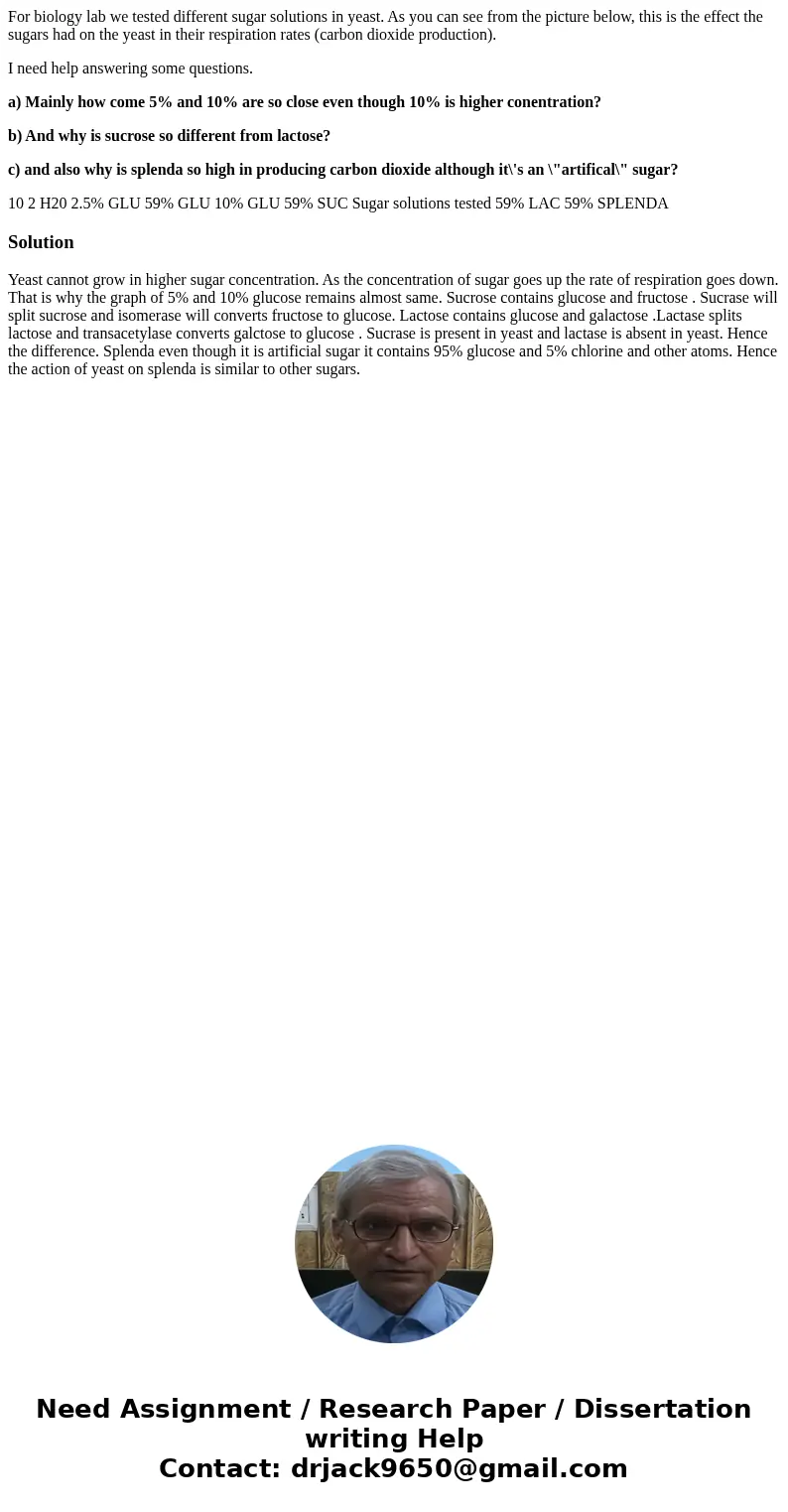For biology lab we tested different sugar solutions in yeast
For biology lab we tested different sugar solutions in yeast. As you can see from the picture below, this is the effect the sugars had on the yeast in their respiration rates (carbon dioxide production).
I need help answering some questions.
a) Mainly how come 5% and 10% are so close even though 10% is higher conentration?
b) And why is sucrose so different from lactose?
c) and also why is splenda so high in producing carbon dioxide although it\'s an \"artifical\" sugar?
10 2 H20 2.5% GLU 59% GLU 10% GLU 59% SUC Sugar solutions tested 59% LAC 59% SPLENDASolution
Yeast cannot grow in higher sugar concentration. As the concentration of sugar goes up the rate of respiration goes down. That is why the graph of 5% and 10% glucose remains almost same. Sucrose contains glucose and fructose . Sucrase will split sucrose and isomerase will converts fructose to glucose. Lactose contains glucose and galactose .Lactase splits lactose and transacetylase converts galctose to glucose . Sucrase is present in yeast and lactase is absent in yeast. Hence the difference. Splenda even though it is artificial sugar it contains 95% glucose and 5% chlorine and other atoms. Hence the action of yeast on splenda is similar to other sugars.
 Homework Sourse
Homework Sourse